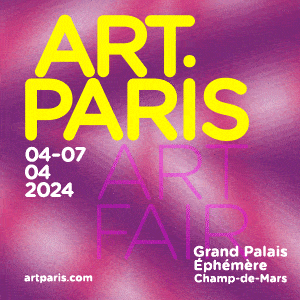Whitehot Magazine
April 2024
"The Best Art In The World"
"The Best Art In The World"
April 2024
September 2007, Manifesta 7

Ex-Peterlini, Rovereto. Courtesy Manifesta7.
Manifesta7: Focus on Rovereto
Manifesta7, the most recent edition of the itinerant European biennial of contemporary art, did something it’s never done before. Previously hosted by individual cities, this year it spans an entire region – the Trentino Alto-Adige region of Northern Italy. Trailing along the north-south axis of the mountainous Brenner Pass, the biennial takes place in the four picturesque towns of Rovereto, Trento, Bolzano, and Fortezza. Once a part of , this region is home to a large minority of native German speakers, whose relationship with their ethnic Italian countrymen has not always been trouble-free. Today Trentino enjoys the official political status of an “autonomous region”. It is both a historically prominent industrial center and a distinguished site in the history of the Futurist art movement. In fact, Rovereto, the southernmost city on the Manifesta7 itinerary, was home to Fortunato Depero, the renowned Futurist painter, poet, and designer.
It is also in Rovereto that the most amitious curatorial project of the biennial can be found. Rovereto’s head curator, Adam Budak (Krakow/Graz), working with a team of subcurators, tackles the Herculean task of managing the three venues of his sprawling exhibition, Principle Hope. Taking place in a mid 19th-century tobacco factury (“Manifattura Tabacchi”), an early 20th-century cocoa factory (“ex-Peterlini”), and the railway station (“manifeSTATION”), Budak’s installations function as ubiquitous community interventions that aim to involve, rather than invade the smallest town ever to host a Manifesta.

Manifattura Tabacchi, Rovereto, Opening Day, 2008. Photo: Träger, Courtesy Manifesta7.
Once considered the “Athens of the Trentino Region,” Rovereto suffered an identity crisis in the 50s, 60s, and 70s as it underwent a slow economic, political, and cultural power shift to nearby Trento. Budak responds to this past, but instead emphasizes the area as “far from nostalgic longing and the trauma of abandonment.” In doing so, he aims to transform the identity of the town from one burdened by its conflicted geopolitical past and lost glory, to one anticipating great possibilities. To this end, he invokes both Ernst Bloch’s notion of “educated hope” and Kenneth Frampton’s “critical regionalism” to raise discourse around post-nationalism, trans-regionalism, community, and belonging.
Principle Hope artists appropriate public space as “an area of potentiality” by engaging in modes of resistance that undermine its legitimacy. Their artwork, primarily comprised of conceptual art, performance, installation, and video and film, proposes responses to questions such as: “How can we think of the region critically?”, “How can we transcend regionalism?”, and “How can we exploit critical regionalism’s power to transfigure the burden of the modern?” They also assert that the daydream can serve as a useful arena where educated hope and critical regionalism can converge and catalyze us to “venture beyond.” In sum, Budak and his collaborators aim to construct a “laboratory of collective daydreams” by transforming Rovereto’s postindustrial venues from locations burdened by their past to spaces that both memorialize its great legacies, and envision utopic possibilities for its future.

Christian Philipp Müller, Carro Largo, 2008. Photo: Träger, Courtesy Manifesta7.
A work that engages quite neatly with these aims is Christian Philipp Müller’s fabulously outlandish Carro Largo (2008), a surreal parade float bearing a sign that reads “Space Rendezvous,” a model of the coupling American Apollo and Russian Sojuz spacecrafts, and a gaggle of folk-song-singing locals clad in traditional Alpine garb. The main event occurred when a tractor hauled the float from Manifattura Tabachi to ex-Peterlini to create the “parade”. Although a smaller crowd turned out than Müller had perhaps hoped, it still effectively engaged with the local townspeople as intended. The work was inspired by the artist’s discovery of an unused pack of “ApolloSojuz” cigarettes on the tobacco factory’s floor, as well as his research of Furtunato Depero’s 1936 Futurist-folklore parade float for the factory. Through this fusion of sources, Müller efficiently draws on local history to propose his own re-adaptation of the event.
Runa Islam’s 16 mm film, The House Belongs to Those Who Inhabit It (2008), is similarly critically engaged with the local site, though completely divergent in tone. Tucked into one of Manifattura Tabacchi’s back corners, it is quite thoughtfully installed. Inspired by the artist’s discovery of a graffiti text bearing the title phrase on a wall of the previously anarchist-occupied ex-Peterlini building, the film continues Islam’s recent process of “writing with the camera.” As if the nozzle of the spray paint can used to write the message had been fitted with a hidden camera, the shot sensuously caresses the disused and crumbling surface of the wall as it literally spells out the text. This subtle, yet effective work validates a local form of radical resistance to hegemonic approaches to post-industrial architecture.

Nummer acht - Everything is going to be alright, 2007.
Photo: Geraert, Courtesy Manifesta7.
Other notable tactics towards the abandoned architecture of ex-Peterlini are Johannes Vogl’s site-specific interventions, Black Hole in a White Cube (2008) and Gold-Inoculation (2008), both located in ex-Peterlini itself. The former is a series of peepholes the artist has installed into the newly constructed white cube walls, built to obscure the former factory’s non-restored spaces. The holes reveal multiple views into its dilapidated hidden rooms. The latter is represented by the artist’s unseen act of injecting real gold into the walls. Just as its transformation from factory to gallery increased its value, this act is meant to literally enrich the building. While Black Hole engenders a profound physical looking experience that gracefully pays homage to the structure’s past, Gold-Inoculation is a superficial procedure that offers nothing compelling beyond its initial cleverness.
A series of live and filmed performances also contend with themes such as identity and place, resistance to hegemony, and visionary realities. Guido van der Werve’s mesmerizing performance-based film Nummer acht. Everything is going to be alright (2007) depicts the artist walking on the frozen Finnish Gulf of Bothnia towards a static camera, as a massive icebreaking ship trails him by only 15 meters. Ragnar Kjartansson’s kitschy, yet arresting performance, SCHUMANN Machine (2008), housed in an absurd and deceptively crude inferno-shaped structure, consists of a tuxedo-clad Kjartansson and piano accompanist (artist, Davið Þór Jónsson), who while sipping proseccos and smoking cigars, continually perform the heartwrenching Hör' ich das Liedchen klingen from Schumann’s Dichterliebe. Like a Neo Rauch painting come-to-life, the work’s strength lies in the music’s tragic power coupled with the disjunctive mishmash of multiple associations it presents from Romanticism to Surrealism, and Psychadelia to Dada.

Ragnar Kjartansson, SCHUMANN Machine, 2008. Photo: Träger, Courtesy Manifesta7.
Speaking of Dada, I would be remiss in failing to mention Adam Pendleton’s powerful text-based performance, Black Dada (2008) presented in “Matter of Fact”, a subsidiary exhibition (curated by Krist Gruijthuijsen) dealing with pedagogy in performance. Consisting of a spoken word manifesto that cleverly weaves together multiple unattributed source texts, it dextorously dismantles accepted textual hierarchies, while proposing alternative approaches to content regarding homosexuality, race, and art history.
“Matter of Fact” proved to be the strongest of the side exhibitions which also included: “Social Art Praxis”, an amateurish exhibition of the work of IUAV student collectives (curated by Cornelia Lauf); the interesting, but slightly inaccessible “Auditory Epode” exploring sound art (curated by Tobi Maier); and the lackluster “ManifeSTATION” dealing with local, regional, and trans-national identity from the perspective of city planning (curated by the Office for Cognitive Urbanism). Earning an honorable mention are the parallel exhibitions hosted by Rovereto’s five-year-old Mart museum of contemporary art, which though not well-integrated into the fabric of the local community, is still significant for its impressive Futurist and Arte Povera collections, as well as two surprisingly exceptional temporary exhibitions, Eurasia and Contemporary Germany.

Mart (Museo di arte moderna e contemporanea di Trento e Rovereto), Rovereto. Courtesy Mart.
Situating Rovereto’s identity as “in-progress”, Principle Hope excavates its process of becoming something new. As a town in a region rediscovering its legacies and reasserting its identity, it provides the perfect platform to explore issues that are relevant to all Europeans. In the light of the emergence of the European Union, it serves as a case study to investigate a range of geopolitical approaches to community, from provincialism to trans-nationalism. An element of “becoming” is hoping for an imagined something else, a dreamed of something better. Though sometimes awkward, overwhelming, and unfocused, on the whole Principle Hope should be commended for audaciously submitting inspiring and innovative proposals for what our greatly anticipated future might look like.

Gillian Sneed
Gillian Sneed is a writer in New York.
gilliansneed@gmail.com








